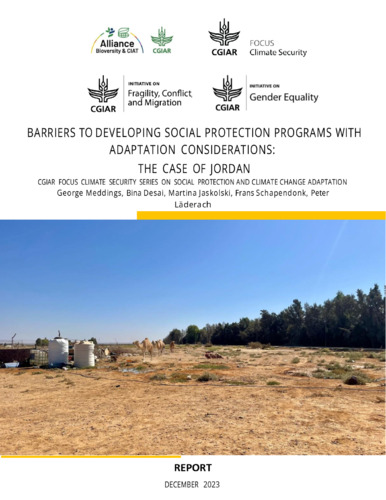Barriers to developing social protection programs with adaptation considerations: The case of Jordan
Abstract
The Hashemite Kingdom of Jordan faces a plethora of climate challenges, from rising temperatures to drought and desertification, exacerbating issues of water scarcity. Concurrently, the country is home to an expanse of social protection and humanitarian assistance programs, varying in delivery modality and responsible actors. The potential and necessity of combining these programs with climate adaptation measures is recognized within Jordan, identified by program participants, social protection and humanitarian assistance program practitioners, as alluded to in the National Adaptation Plan (NAP), and as highlighted by the priorities of the National Social Protection Strategy (NSPS). However, gaps and barriers to developing adaptive social protection abound. These include holes in coverage, siloed approaches, and lack of program development with the local communities. These barriers, and the subsequent recommendations have been identified and formulated through a literature review, key informant interviews and workshops with social protection practitioners and individuals involved in the provision of humanitarian assistance, and key informant interviews, workshops and focus group discussions with local communities in Azraq and North Shuna in Jordan. Recommendations include greater involvement of local communities throughout a program’s monitoring, evaluation, and learning (MEL) framework to promote contextual suitability and the efficacy of programs in providing support against climate impacts. This improved vertical coherence should be accompanied by greater coordination between government ministries and between international organizations to ensure complementary action and programming. Coverage of workers in climate vulnerable sectors, such as agriculture, by the Social Security Corporation (SSC) should be expanded through formalization and contribution support. Additionally, targeting of communities vulnerable to climate change impacts could be ameliorated through the widespread use of climate vulnerability assessments and GIS mapping. Whilst programs should be designed to address climate shocks (i.e shock-responsive), a longer-term perspective is also required to ensure programs exist that build long-term resilience to climate change impacts, such as through training in climate-resilient agricultural techniques and livelihoods.

